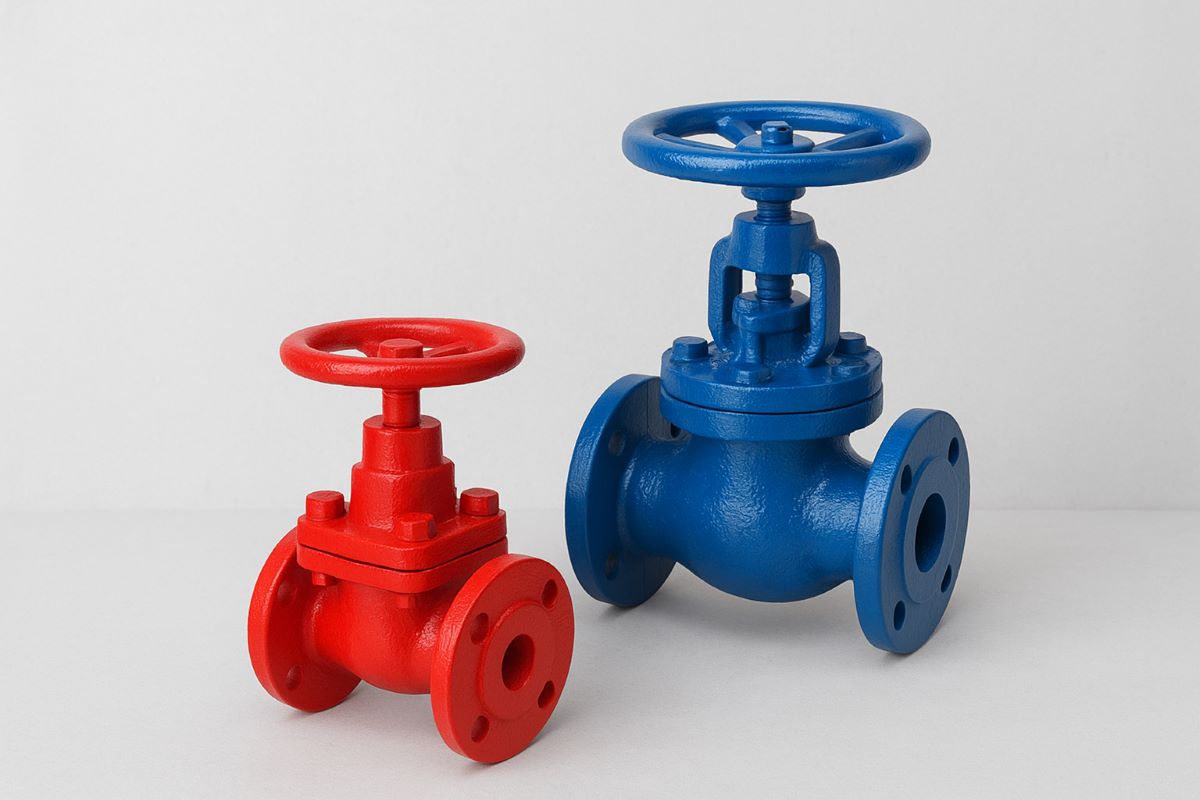Valves play a vital role in controlling the flow of fluids across a wide range of industrial systems. Whether in oil and gas, water treatment, or chemical processing, valve performance directly influences system safety and efficiency. However, one of the biggest challenges in valve maintenance is corrosion — a natural but costly process that can lead to performance degradation, leaks, and even equipment failure.
To address this, protective coating technologies have become a crucial part of modern valve design. The right coating not only prevents corrosion but also improves heat resistance, wear resistance, and mechanical strength. But how do you choose the right coating? And what makes one type better suited than another? Let’s take a closer look.
Principles for Selecting Valve Coating Materials
When choosing a coating for valves, several key factors must be considered. Each factor affects how well the valve can withstand harsh environments and maintain its performance over time.
a. Corrosion Resistance
This is the most critical property of any valve coating. The coating material must resist chemical attacks from corrosive substances such as acids, alkalis, and salts found in process media. A poor choice here can result in rapid material degradation and reduced valve lifespan.
b. Heat Resistance
Valves often operate in high-temperature environments, especially in industries such as petrochemicals or power generation. Coating materials should maintain their stability and adhesion even when exposed to elevated temperatures, preventing peeling or cracking.
c. Wear Resistance
Valves are also subject to abrasion from solid particles carried by fluids. A coating with good wear resistance ensures the valve’s sealing surfaces remain smooth and functional, reducing maintenance costs and downtime.
d. Adhesion Strength
A high-quality coating must bond tightly with the metal substrate. Poor adhesion can lead to delamination, exposing the underlying metal to corrosion. Uniform and dense coatings offer the best protection.
e. Application and Construction Performance
Ease of application is another practical consideration. A coating that is simple to apply — by spraying, brushing, or dipping — can lower construction costs and improve consistency across large production batches.
Common Valve Coating Materials and Their Characteristics
Different industries and working conditions require different coating materials. Below are four of the most commonly used coatings for corrosion protection in valve manufacturing.
(1) Epoxy Resin Coating
Epoxy resin coatings are among the most widely used protective materials in the valve industry. Known for their excellent chemical resistance and strong adhesion, epoxy coatings create a dense, protective barrier between the valve surface and the corrosive medium.
Key features:
- Corrosion Resistance: Excellent resistance to most acids, alkalis, salts, and organic solvents.
- Heat Resistance: Stable performance at temperatures up to around 150°C.
- Adhesion: Bonds firmly to metal surfaces, reducing the risk of peeling.
- Ease of Application: Can be applied through brushing, spraying, or dipping, making it versatile for various valve sizes.
Epoxy coatings are ideal for water treatment, chemical processing, and marine environments where both corrosion and cost efficiency matter.
(2) Polyurethane Coating
Polyurethane coatings are valued for their all-around performance — combining corrosion, heat, and abrasion resistance. They also provide a smoother finish and good flexibility, making them suitable for environments with mechanical stress or vibration.
Key features:
- Corrosion Resistance: Good protection against inorganic acids, alkalis, and salts.
- Heat Resistance: Performs well below 150°C.
- Wear Resistance: High abrasion resistance for areas with particle flow.
- Adhesion: Excellent bonding to metal substrates.
- Application: Can be easily sprayed or brushed.
These coatings are widely used in oil and gas pipelines, slurry systems, and mining operations where abrasion and corrosion occur simultaneously.
(3) Fluoropolymer Coating
Fluoropolymer coatings (such as PTFE, PFA, or FEP) are recognized for their superior chemical and temperature resistance. They form an ultra-smooth, non-stick surface that minimizes fluid friction and buildup.
Key features:
- Corrosion Resistance: Outstanding resistance to nearly all acids, bases, and solvents.
- Temperature Range: Operates effectively from -200°C to +250°C.
- Wear Resistance: Excellent abrasion resistance, ideal for aggressive media.
- Adhesion: Strong bonding when properly applied on prepared metal surfaces.
- Application: Typically applied by spray or dip-coating.
Fluoropolymer coatings are often used in chemical, food processing, and pharmaceutical industries, where cleanliness and extreme resistance to corrosion are essential.
(4) Metal-Ceramic Coating
Metal-ceramic (cermet) coatings are advanced, high-performance solutions that combine the toughness of metals with the hardness and stability of ceramics. They offer exceptional resistance to corrosion, heat, and mechanical wear — making them suitable for the harshest environments.
Key features:
- Corrosion Resistance: Excellent against almost all industrial chemicals.
- Heat Resistance: Effective up to 1000°C.
- Wear Resistance: Extremely high — suitable for heavy-duty applications.
- Impact Resistance: Strong resilience to mechanical shock.
- Application: Requires advanced techniques like plasma spraying or laser cladding, which increase cost but also durability.
Metal-ceramic coatings are common in power plants, refineries, and high-temperature manufacturing processes, where standard coatings fail to perform.
Conclusion
The right coating doesn’t just protect a valve — it extends its life, improves efficiency, and reduces maintenance costs. As industries continue to demand higher reliability and longer service life, coating technologies are evolving rapidly, offering smarter, more sustainable solutions.
For valve manufacturers and end users alike, understanding the science behind coating selection is the key to achieving maximum protection and performance in any working environment.
Post time: Nov-10-2025


